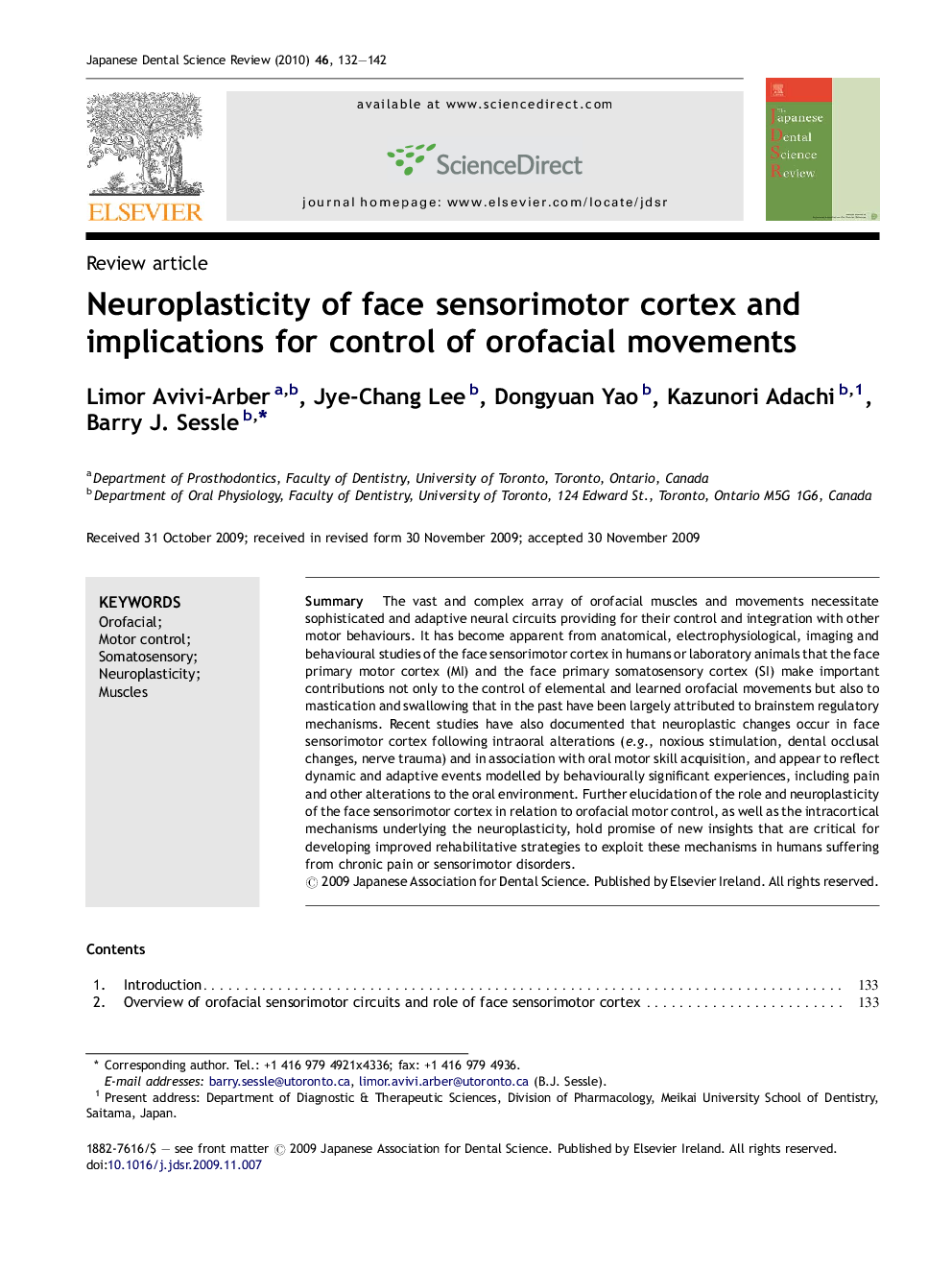| Article ID | Journal | Published Year | Pages | File Type |
|---|---|---|---|---|
| 3136209 | Japanese Dental Science Review | 2010 | 11 Pages |
SummaryThe vast and complex array of orofacial muscles and movements necessitate sophisticated and adaptive neural circuits providing for their control and integration with other motor behaviours. It has become apparent from anatomical, electrophysiological, imaging and behavioural studies of the face sensorimotor cortex in humans or laboratory animals that the face primary motor cortex (MI) and the face primary somatosensory cortex (SI) make important contributions not only to the control of elemental and learned orofacial movements but also to mastication and swallowing that in the past have been largely attributed to brainstem regulatory mechanisms. Recent studies have also documented that neuroplastic changes occur in face sensorimotor cortex following intraoral alterations (e.g., noxious stimulation, dental occlusal changes, nerve trauma) and in association with oral motor skill acquisition, and appear to reflect dynamic and adaptive events modelled by behaviourally significant experiences, including pain and other alterations to the oral environment. Further elucidation of the role and neuroplasticity of the face sensorimotor cortex in relation to orofacial motor control, as well as the intracortical mechanisms underlying the neuroplasticity, hold promise of new insights that are critical for developing improved rehabilitative strategies to exploit these mechanisms in humans suffering from chronic pain or sensorimotor disorders.
